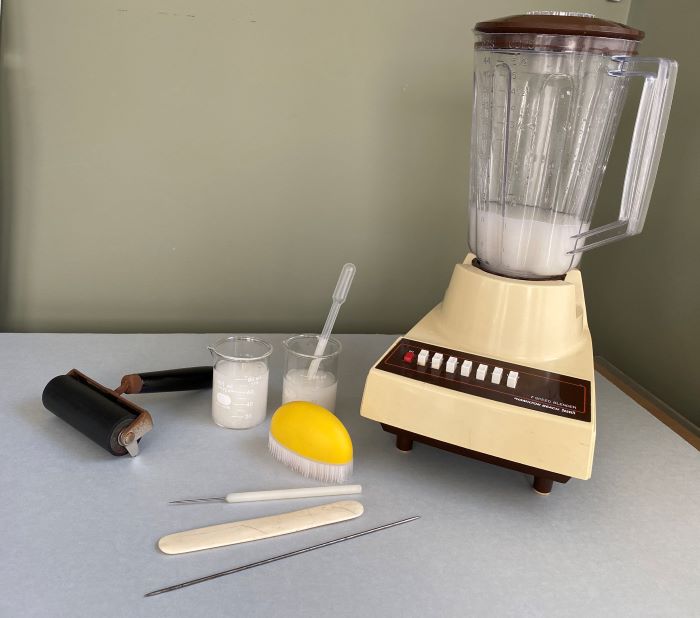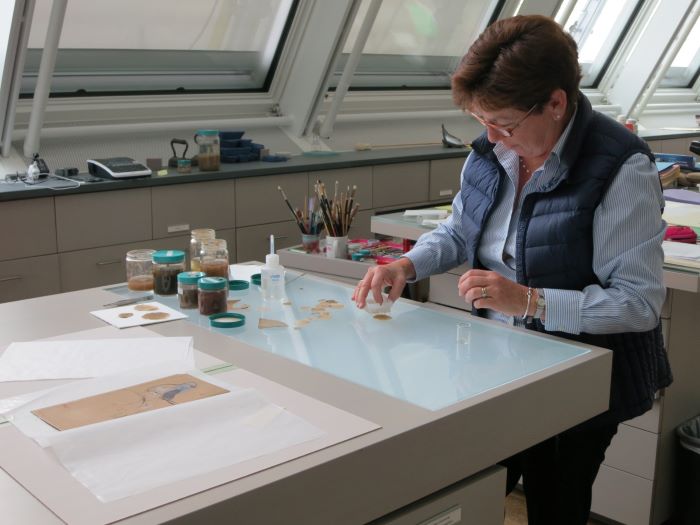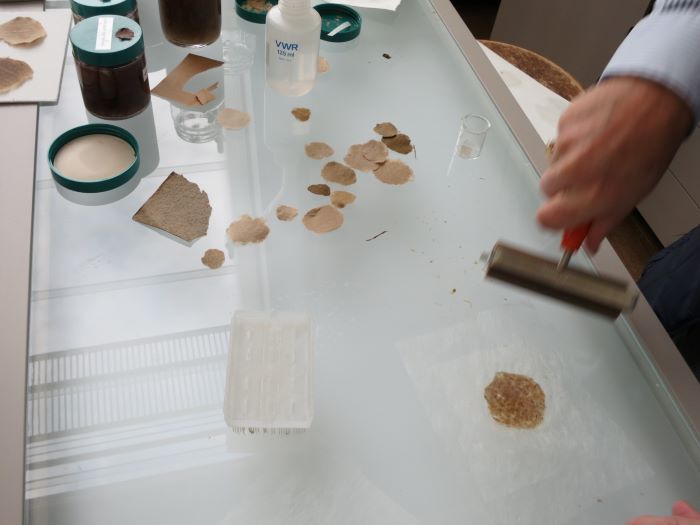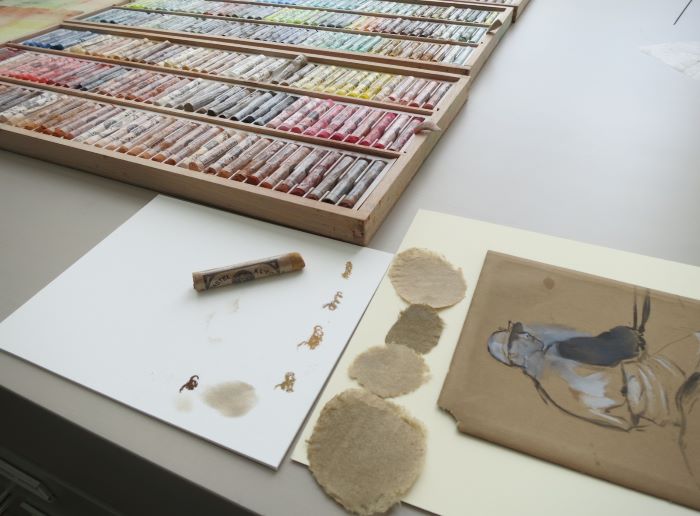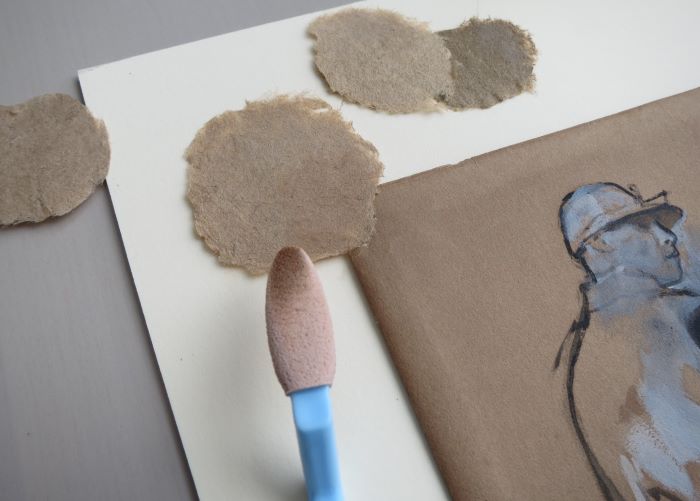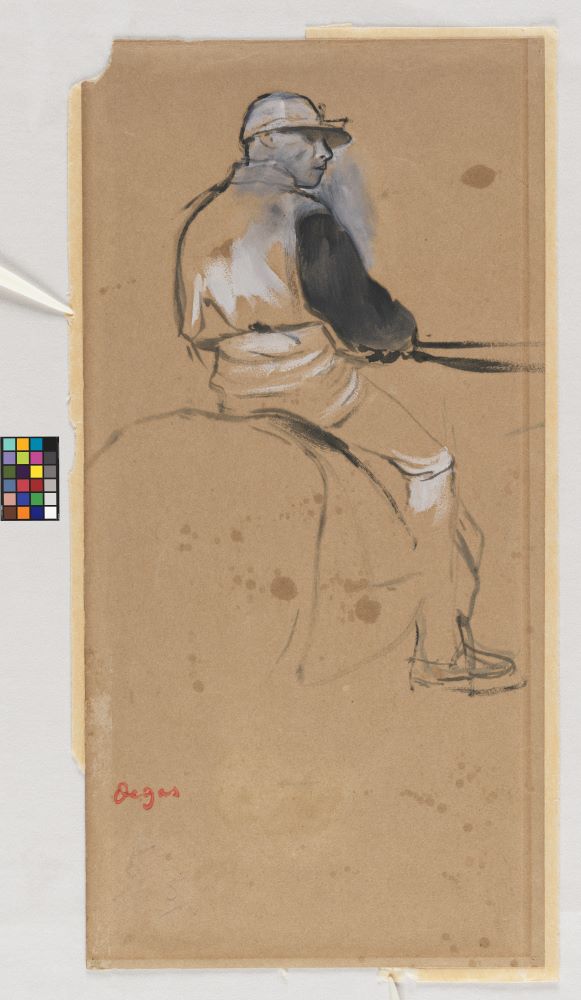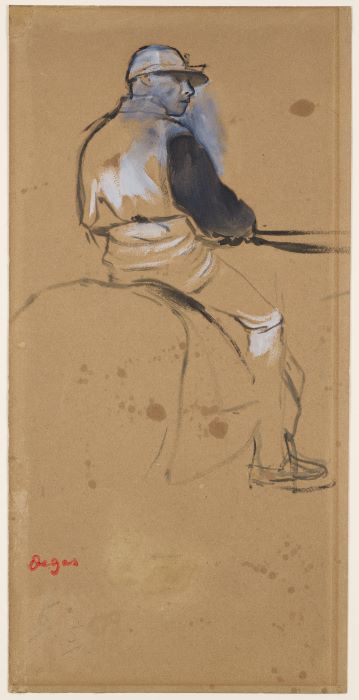Degas’s drawing Mounted Jockey appeared in a 1940 catalogue Drawings in the Fogg Museum of Art—though it wasn’t yet part of the collections. It had been promised to the museum by collector and Fogg associate director Paul Sachs. But before Sachs could give it to Harvard, the drawing was stolen while on exhibition elsewhere in the United States. In 2015, the work reappeared as part of an estate and was promptly delivered to the Harvard Art Museums. In the years it was lost, the drawing had suffered.
This spirited sketch from the late 1860s was drawn in essence with a brush. Essence is a technique in which paint is drained of oil and mixed with turpentine to give it a matte gouache-like consistency.[1] Degas used the brown color of the paper as a middle tone, describing the figure with rapid, energetic black lines, and then adding highlights in white to bolster the contrasts and heighten the effect of this figural study. The motif depicted here is connected to one of the artist’s favorite subjects of modern life: the horse race. A luxury sport imported from England, horse racing was in vogue in 19th-century Paris. Degas loved it almost as much as the ballet, and he dedicated many paintings and drawings to the sport.
The time away from the museums had taken its toll on Degas’s sketch. When we examined it in 2015, we found it had been adhered to a mat with paper remnants along the verso edges. The thin wove tan paper had darkened with a noticeable mat burn (a dark brown line around the perimeter of the drawing due to contact with a former acidic mat). Stains, possibly oil-based, were scattered around the surface. Of utmost concern was the missing upper left corner, which quite literally ruined the work’s visual appeal.

